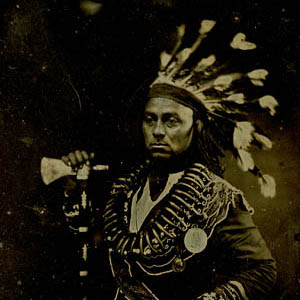Framing Canada: A Photographic Memory
This site provides a searchable database of more than 400,000 photographic images drawn from the 22 million in the Library and Archives Canada (LAC) collection. The images, dating from 1843 to the mid-20th century, come from government, commercial, and private sources. They document an enormous spectrum of topics in Canada’s social, economic, and political history, from gypsies to coronations, and from tea parties to mine explosions. Instructors who incorporate this site into their curricula will likely need to do some background preparation in order to use it effectively, but the potential applications of the material available here would make that effort worthwhile.
Along with the database itself, the site features short essays on the following topics: Nation Building, The Canadian Mosaic, Portraiture, Aboriginal Peoples, Amateur Photography, Photojournalism, The Evolution of Photography, Commercial Photography, War and Conflict, A Sense of Space, and The Weird and the Wacky (“Humour in Archival Photographs). Several photographs are associated with each essay topic, and their titles are suggestive of themes around which instructors might build class exercises or assignments.
One shortcoming of this site is that beyond the essay titles, there is not much additional information about the strengths, extent, or range of the collection. (There is no keyword index list from which to browse, for instance.) Thus, users who know what to search for because they are familiar with important issues and figures in Canadian history might find meaningful resources here, but those less familiar with the field might not be so successful.
The site also contains a Glossary of photographic terms and a link to Educational Resources. The latter will be of great use to instructors. It provides concrete suggestions as to how students might “unpack” and analyze photographs as historical sources, contains some sample exercises, and lists links to other useful sources (although as well to some non-functioning links since this page has been archived.)
The collection clearly does have substantial documentation on the topics of westward expansion and exploration, Aboriginal history (documented in more than 80,000 photographs), National Defense, and Immigration, although the site’s historical presentation of many of these topics is rather limited. The introductory essay to The Canadian Mosaic, for instance, includes several insightful suggestions for how viewers might think critically about the visual sources linked to the essay. It discusses how the motivations of those who took photographs might have shaped their subjects’ depictions, noting how the commercial interests of Canadian National Railway photographers influenced their tendency to present “success stories” of immigration. However, the introduction to the vast history of Aboriginal Canada is surmised in five short paragraphs and a general commentary, without much direction, that viewers should recontextualize the images presented on the site.
Teachers who wish to construct an exercise with the collection’s holdings on immigration and The Canadian Mosaic might, therefore, do well to use images at the site in conjunction with other material. The Canadian Council on Refugees [CCR], for example, has a reliable summary of Canada’s 20th-century history of immigration. Students might consult the CCR’s description of the 1910 Immigration Act’s notorious “continuous journey” rule which was used to restrict the admission of Asian immigrants to the country, and search for photographic material from “Framing Canada” to document the experiences of Asian immigrants before and after its passage.
Another possible exercise for teachers would take advantage of the substantial documentation contained in the descriptive records for each photograph. Students could be challenged to consider how the presentation (photographer, perspective, angle, lighting, setting) shapes a photograph’s implications. Students could be asked to analyze the collection of photographs contained at the site documenting the story of one of Canada’s most controversial historical figures, Louis Riel. Riel led the métis population against the Canadian government in what is now Manitoba in two rebellions in 1869 and 1885. He was (and is) viewed as a traitor by some and a hero by others. There are 17 different photographs related to Riel in the collection, including five different images of the man himself. Students might compare the various ways Riel—or his relatives or sympathizers—are depicted in different images in order to trace the degree to which a photograph’s framing determines the message it conveys.
